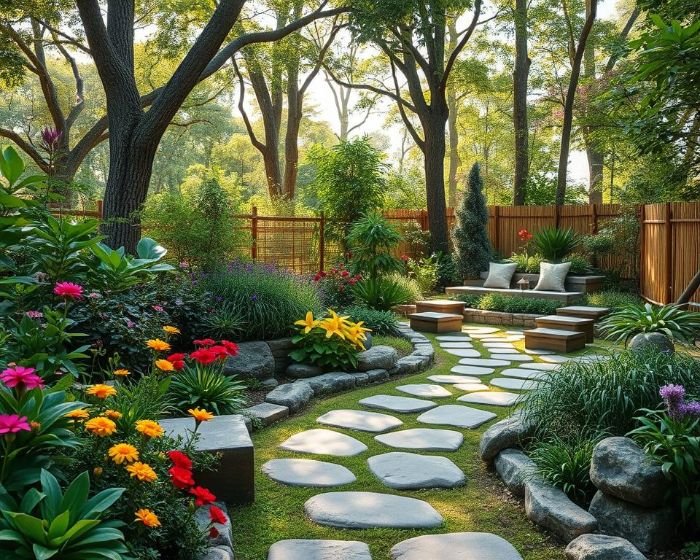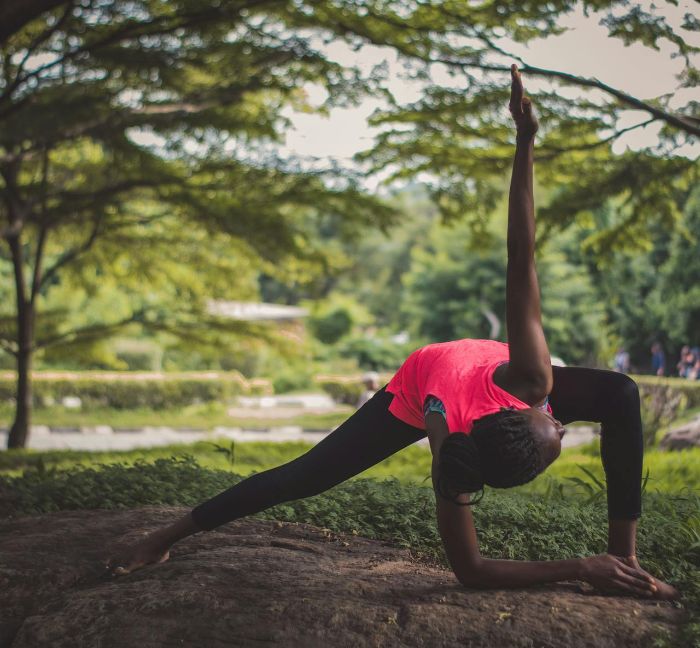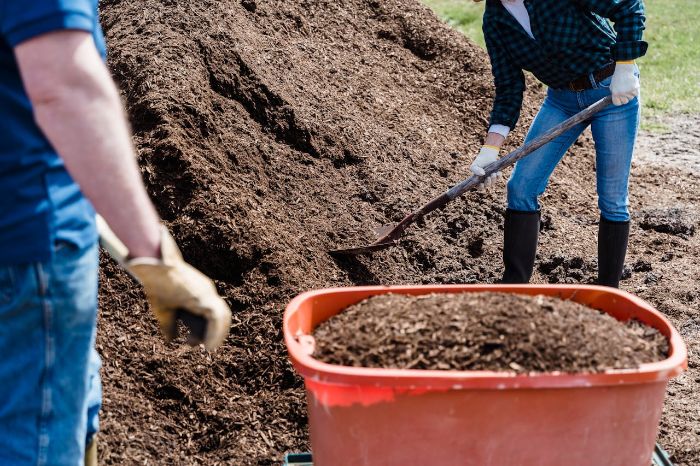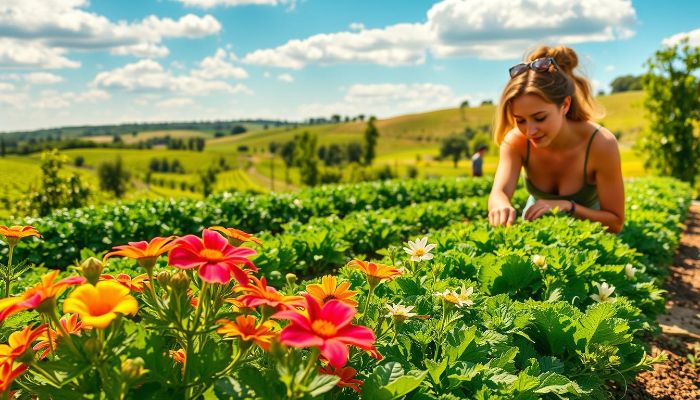Ever thought of making your outdoor area a calm spot that boosts your mental health? A mindful garden is a magical way to mix nature with peaceful design. It’s a place for peace and thinking, showing how the right touches can make a space for relaxation and thought.
As we look at what makes a mindful garden, get ready to see how simple changes can deepen your bond with nature.
Key Takeaways
- A mindful garden enhances mental well-being and reduces stress.
- Thoughtful garden design fosters deeper connections with nature.
- Integrating calming elements can transform an outdoor space into a mindfulness sanctuary.
- Careful plant selection contributes to a soothing atmosphere.
- Creating spaces for reflection is essential for daily mindfulness practices.
Table of Contents
The Benefits of a Mindful Garden
Creating a mindful garden has many benefits, especially for your mental health. Being in nature offers a place for calm and reflection. It helps reduce stress and brings peace.
Enhancing Mental Well-being and Reducing Stress
Mindful gardens are a retreat from daily life’s stress. Studies show Spending time in nature boosts emotional health, and adopting regular mindfulness practices in your garden further lowers stress hormones and promotes relaxation.
Visiting a garden helps you find calm. It’s a place where you can unwind and feel at peace.
Encouraging Daily Mindfulness and Connection with Nature
Visiting a mindful garden regularly helps you stay mindful. It deepens your connection with nature. The sounds, smells, and colors of a garden enrich your senses.
These experiences not only calm you but also help you feel more connected to yourself and the world.
Planning Your Mindful Garden Space
Good garden planning is key to creating a peaceful spot. The right spot can make finding calm easier. Designing with care makes the garden welcoming, echoing therapeutic landscaping principles that foster a deeper connection with nature.
Choosing the Right Location for Quiet and Reflection
Finding a calm spot is crucial. Look for places away from loud noises. Being close to nature, like trees or water, adds to the peace. Make sure it gets the right amount of sun and shade for meditation.
Designing with Purpose – Flow, Accessibility, and Comfort
Design your garden to flow smoothly. Paths should guide you through and thoughtful layout planning ensures each seating area fosters relaxation and reflective thinking.
- Benches under trees for shade
- Open areas for stretching or yoga
- Herb gardens for both use and rest
Use garden design apps or get help from experts. They can make your garden even better, making it a true quiet space.
Key Elements to Enhance Mindfulness in Your Garden
To make a mindful garden, you need to add special elements. These elements bring peace and make you think deeply. Water features and natural materials make your garden a calm place. They look good and feel great.
Water Features – Calming Sounds and Reflections
Water features like fountains or ponds produce soothing sounds; incorporating reflective water elements is known to encourage deeper relaxation and meditative focus. The sound of water creates a rhythm that makes you mindful.
These features also reflect light beautifully. This creates a changing view in your garden. It catches your eye easily.
Incorporating Natural Materials – Wood, Stone, and Gravel
Using natural materials like wood, stone, and gravel makes your garden feel real. They connect you to the earth. This makes you feel grounded and present.
The different textures and colors of these materials make your garden look better. They also make it a peaceful place for thinking and being mindful.
Plant Selection for a Mindful Garden
Creating a mindful garden starts with choosing the right plants. The right plants can make your garden peaceful and relaxing. Focus on plants with soothing scents and soft textures for a calm space. Seasonal gardening keeps your garden interesting all year.
Choosing Plants with Soothing Scents and Soft Textures
Aromatic plants make your garden calm. Lavender, chamomile, and jasmine have calming smells. They help you relax when you’re in your garden.
Soft-textured plants like lamb’s ear and ferns are fun to touch. They make you want to explore your garden. These plants help you feel calm and well.
Seasonal Plants for Year-Round Interest and Meditation
Seasonal gardening keeps your garden looking good all year. Use a mix of perennials and annuals for changing looks. This keeps your garden interesting and perfect for meditation.
Think about using native plants that fit your local weather. They need less care and attract local animals. This makes your garden a better place for all living things.
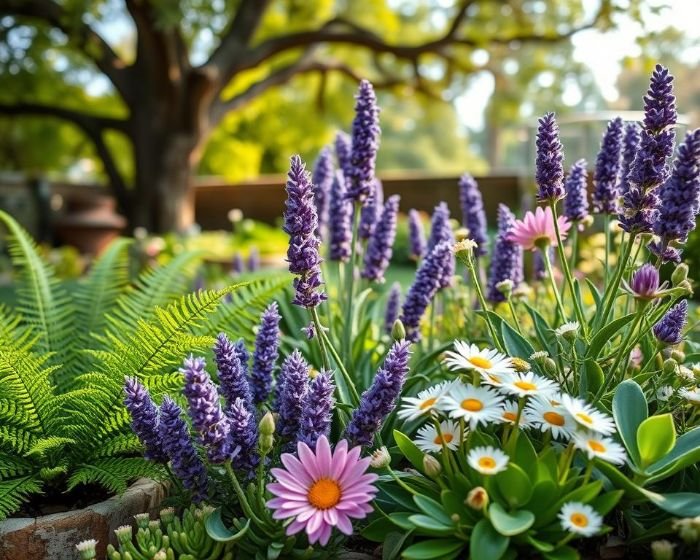
Creating Sensory Paths and Spaces for Reflection
Adding sensory pathways to your mindful garden makes it better. These paths let visitors feel, see, and hear the garden. Using materials like gravel, smooth stones, or wooden planks helps ground the mind.
Designing Pathways with Textured Materials for Grounding
Textured paths make for a complete sensory trip. Mix different materials for different feels underfoot. This boosts mindfulness and sparks reflection.
Plants along the paths add to the experience. They offer sights and smells, making the journey even richer.
Adding Benches and Meditation Spots in Quiet Corners
Benches and meditation spots in quiet areas invite peace. Look for spots where nature’s beauty shines. Benches should be comfy for rest or thought.
These spots make meditation inviting. They encourage people to practice mindfulness often.
Lighting Your Garden for Tranquility
Effective garden lighting turns outdoor spaces into peaceful places. It makes the garden look beautiful and safe. It also makes seating areas inviting, perfect for relaxing in the evening.
Soft, Ambient Lighting for Evening Relaxation
Choosing the right lighting is key to a calm space. Soft light creates a relaxing glow, great for evenings outside. Lights placed well offer enough light to see the garden’s beauty. They help you feel at peace.
Adding ambient light to your garden makes enjoying the stars easier. It makes your outdoor space a place for quiet reflection.
Solar and LED Options to Create a Peaceful Glow
Solar and LED lights are good choices for garden lighting. They are eco-friendly and flexible in design. Solar lights use the sun’s energy during the day. They light up your garden at night.
LED lights are energy-saving and last a long time. Together, they offer a peaceful light without being too bright. They make your evenings calm and enjoyable.
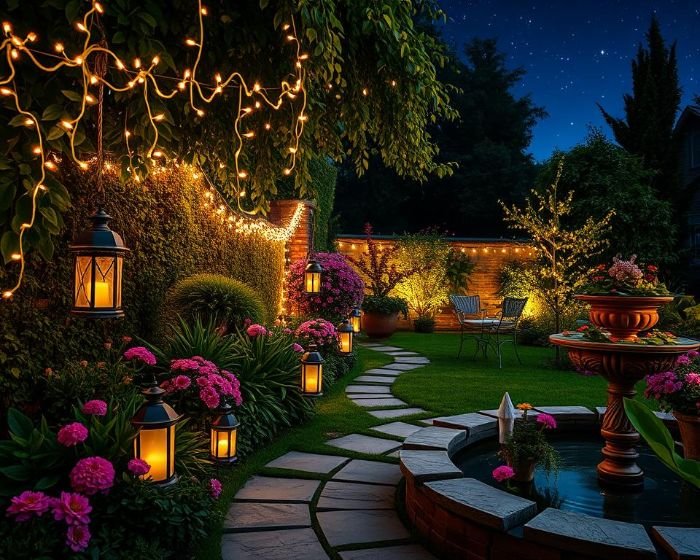
Incorporating Personal Touches to Reflect Your Mindfulness Journey
Adding personal touches makes a mindful garden truly yours. It connects you more deeply to the space. Garden art, statues, or inspirational objects make it beautiful and peaceful.
Adding Garden Art, Statues, or Inspirational Objects
Art and statues in the garden catch the eye and spark thought. Choose pieces that speak to you. This way, you feel a stronger bond with your garden.
- Hand-painted stones with affirmations
- Whimsical sculptures that bring joy
- Decorative birdhouses that attract wildlife
These touches make your garden a place of calm. They invite you to practice mindfulness every day.
Creating Spaces for Yoga, Tai Chi, or Breathing Exercises
Setting up areas for yoga and meditation turns your garden into a wellness spot. A special corner for these activities creates a peaceful place. Think about:
- Flat stones or wood platforms for stability
- Quiet nooks surrounded by lush plants for privacy
- Gentle lighting to create a serene ambiance
These spaces help you relax and grow. They make your garden a place of healing and peace.
Maintaining Your Mindful Garden Space
Keeping a mindful garden in top shape is good for the planet and makes it more welcoming. Regular care helps plants grow well and lets you enjoy quiet moments. Simple habits can keep your garden looking great.
Simple Maintenance Routines to Keep Your Garden Inviting
Having a set schedule for garden care stops it from getting ignored. Here are some tasks to consider:
- Weeding often to keep plants healthy and stop weeds.
- Watering right, based on the season, to avoid too much or too little.
- Pruning to keep plants looking good and growing new.
- Mulching to keep moisture in and weeds out, making it look neat.
Seasonal Adjustments to Keep Your Space Fresh and Reflective
Changing your garden with the seasons makes it more interesting. Here are some seasonal tips:
- Switching up plant layouts to show off new flowers and leaves.
- Changing decorations, like adding seasonal ornaments or art.
- Choosing plants with different smells to add to the atmosphere.
Tips for Using Your Mindful Garden Space Daily
Using your mindful garden space every day makes it even more calming. A regular routine helps you connect with nature; practicing observational awareness can heighten your sense of peace among the plants. By setting aside time for daily mindfulness, you create moments for relaxation and reflection.
Setting Aside Time Each Day to Enjoy Your Garden
Choosing a special time each day for your garden makes it more enjoyable. Here are some tips:
- Find a quiet morning or evening to connect with nature.
- Do simple tasks like watering plants or watching flowers bloom.
- Turn it into a daily ritual to slow down your thoughts.
Incorporating Mindful Breathing and Reflection Practices
Mindful breathing in your garden makes it even more peaceful. Try these:
- Find a quiet spot to sit, close your eyes, and focus on your breath.
- Take slow, deep breaths while looking around you.
- Think about your feelings and thoughts, letting nature inspire you.
Conclusion
Creating a mindful garden needs careful planning and personal touches. It’s about connecting with nature, which boosts our mental and emotional health. A wellness garden becomes a peaceful place for reflection and mindfulness.
Adding soothing plants, calming water, and inviting paths makes the garden therapeutic. This shows how reconnecting with nature can improve our lives. It helps us find balance in our busy world.
Spending time in your garden brings peace and calm to your day. Mindful gardening builds a strong bond with nature. It nourishes both the garden and our spirits.
FAQ
What is a mindful garden?
A mindful garden is a peaceful place for calm and thinking. It helps your mind and connects you with nature.
How does spending time in a mindful garden benefit mental health?
Being in a mindful garden lowers stress and anxiety. It also makes you feel better by connecting you with nature.
What elements should I include in my mindful garden design?
Include water features and natural materials like wood and stone. Also, add diverse plants, sensory paths, and comfy seats for relaxation.
How can I select plants for my mindful garden?
Pick plants with nice smells, like lavender. Also, choose seasonal plants for interest all year and for mindfulness.
What is the importance of sensory pathways in a mindful garden?
Sensory paths with different textures help you feel grounded. They make you more aware of nature as you walk and explore.
How can I ensure proper lighting in my mindful garden?
Use soft lights like solar or LED. They make the garden calm at night, perfect for relaxing.
What personal touches can I add to my mindful garden?
Add garden art, statues, or inspiring objects. Also, make areas for yoga or Tai Chi to show your mindfulness journey.
How can I incorporate daily mindfulness practices in my garden?
Spend time each day on mindful breathing, meditation, or just watching nature. It deepens your bond with the garden and boosts its benefits.






